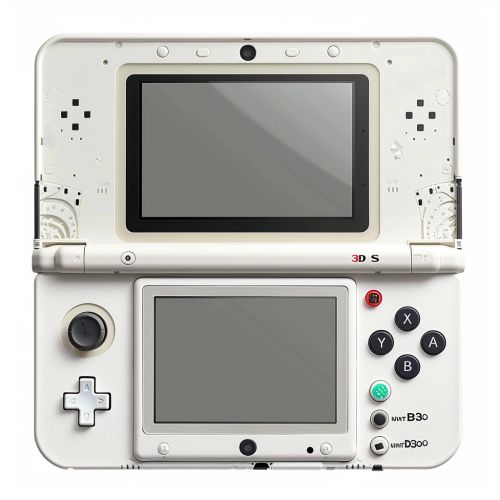Nintendo 3DS
Overview
The Nintendo 3DS is a handheld game console produced by Nintendo. It was officially announced in March 2010 and later launched in Japan in February 2011. It is the successor to the Nintendo DS series of handheld consoles, and it competes with Sony's PlayStation Vita in the handheld gaming market. The Nintendo 3DS features backward compatibility with Nintendo DS series software, including DSi software.


Hardware
The Nintendo 3DS hardware design incorporates a folding clamshell form factor, with the top screen incorporating autostereoscopic 3D technology. This technology allows players to experience 3D effects without the need for special glasses. The bottom screen is a touchscreen, and is used for direct input with a stylus, a feature carried over from the Nintendo DS series.
The console also features a D-pad, an analog "Circle Pad", a volume slider, and four standard face buttons (A, B, X, Y). It also includes a set of shoulder buttons (L and R), a power button, a home button, start and select buttons, and a 3D depth slider to adjust the intensity of the 3D effect. The console also incorporates a gyroscope and an accelerometer for motion detection, enhancing gameplay with physical interaction.
Software
The Nintendo 3DS runs on a proprietary operating system developed by Nintendo. This system includes various pre-installed applications, including the Nintendo eShop, a digital distribution service for downloading games and applications; the Internet Browser; and various multimedia applications such as the Nintendo 3DS Camera and Nintendo 3DS Sound.
The console is also backward compatible with most Nintendo DS and DSi software. Additionally, Virtual Console services allow players to download and play classic games from past Nintendo consoles and other third-party systems.
Reception and Legacy
The Nintendo 3DS received generally positive reviews from critics, who praised its innovative 3D gameplay and wide range of software. However, it also faced criticism for its initial high price and some health concerns related to the 3D functionality. Despite these issues, the console has been commercially successful, with millions of units sold worldwide.
The 3DS's legacy includes several hardware revisions, such as the Nintendo 3DS XL with larger screens, and the Nintendo 2DS, a budget model that lacks the 3D functionality. The console's lifespan also saw the release of numerous critically acclaimed games, making it a significant platform in Nintendo's history.
